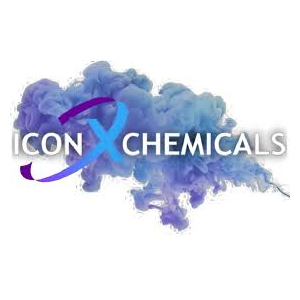\\\\ Top Water Treatment Companies \\\\
\\\\\\\\\\ Top Water Treatment Companies \\\\\\\\\\
-
ICONX Chemicals
ICONX Chemicals manufactures custom-formulated specialty chemicals and provides integrated water treatment solutions for service providers. Its portfolio includes Scale & Corrosion Inhibitors, Biocides, RO products, Antifoams and Defoamers, Safe Acids, Film-Forming Agents, and Advanced Filtration Technologies. All offered with private-label support, global logistics, and regulatory management.
-
American Water Chemicals
American Water Chemicals (AWC) develops advanced membrane treatment chemicals and software for industries requiring high-performance water purification. Serving sectors from municipal water to microelectronics, AWC is recognized for its expertise in antiscalants, membrane cleaners and process optimization, helping clients extend membrane life, improve efficiency and address complex fouling challenges.
-
Aries Chemical
Aries Chemical specializes in water treatment solutions for industrial and municipal clients. Its expertise spans process optimization, wastewater management and chemical supply, helping organizations improve efficiency and meet regulatory standards. With a focus on technical support and sustainable practices, Aries Chemical is recognized for reliable service and tailored, results-driven approaches.
-
Clearwater Industries, Inc
Clearwater Industries, Inc. engineers and manufactures advanced water clarification equipment and chemical systems, helping industries efficiently remove solids from process water and wastewater. Based in Wisconsin, it offers free water testing, expert consulting and eco-friendly solutions—empowering clients to achieve cleaner water and sustainable operations with proven, American-made technology.
-
USALCO
USALCO is a provider of water and wastewater treatment solutions, specializing in alumina-based products for municipalities and industries. With over a century of experience, it focuses on delivering reliable, cost-effective solutions to improve water quality, manage wastewater and serve specialized industrial applications, supported by technical expertise.
More in News
Beyond the Molecule: The Next Era of Specialty Chemicals
Wednesday, October 15, 2025
Fremont, CA: The specialty chemicals industry is transforming significantly, driven by enhanced sustainability, technological advancements, and a growing demand for customized solutions. Companies must adapt their production processes as consumer expectations shift toward eco-friendly products and practices. The emphasis on sustainability is prominent across various sectors, including specialty chemicals, focusing on developing environmentally benign products. Efforts to decrease carbon emissions, manage waste effectively, and utilize renewable resources are transforming how chemicals are produced. Innovations in green chemistry are at the forefront of this change, allowing for the creation of bio-based chemicals and sustainable alternatives to conventional synthetic materials. As a result, the development of biodegradable plastics and sustainable polymers has gained traction as businesses strive to combat plastic pollution and minimize their environmental footprint. Technological Innovations and Customization Demands In addition to sustainability, the rise of Industry 4.0 technologies is revolutionizing the specialty chemicals landscape. Artificial intelligence (AI), machine learning (ML), and the Internet of Things (IoT) are enhancing the efficiency, precision, and sustainability of chemical manufacturing processes. AI and ML algorithms are streamlining production operations, allowing for enhanced predictive maintenance and improved product quality. Meanwhile, smart sensors and IoT devices facilitate real-time production monitoring, ensuring operational efficiency and safety. Data from these devices enables companies to identify trends, enhance safety protocols, and reduce waste throughout the production cycle. The Rise of Customized Solutions in Specialty Chemicals Meeting the demand for customized chemical solutions has become increasingly critical as industries specialize. Businesses seek tailored products that meet specific performance criteria, from automotive coatings to personal care formulations and agricultural chemicals. The specialty chemicals sector is committed to developing bespoke solutions, leveraging advances in chemical engineering and formulation technologies to create high-performance products. For instance, specialty chemicals are utilized in the electronics industry to produce coatings and materials capable of withstanding extreme conditions while delivering exceptional functionality. Moreover, biotechnology plays a pivotal role in the evolution of specialty chemicals. Processes such as biocatalysis enable the production of chemicals from renewable resources like plant-based feedstocks, moving away from fossil fuel dependence. A key innovation in this area is the introduction of bio-based solvents, which serve as safer and more sustainable options than traditional petrochemical-based solvents. Utilizing enzymes and microorganisms fosters development processes that are not only environmentally friendly but also more energy-efficient, culminating in a reduction of waste generation.
Significance of Agrochemicals for Better Crop Production
Tuesday, October 14, 2025
Fremont, CA: In contemporary agriculture, agrochemicals are vital as they help farmers increase crop production, protect against pests and diseases, and support sustainable farming practices. The substances are essential for meeting global food demand while minimizing environmental impact. Key categories of agrochemicals include fertilizers, insecticides, and herbicides. Fertilizers are essential agrochemicals that replenish soil nutrients and promote healthy plant growth. They contain important nutrients such as nitrogen, phosphorus, and potassium, critical for plant development and yield optimization. Fertilizers help improve soil fertility, increase crop yields, and enhance agricultural productivity by providing crops with the necessary nutrients to thrive. Pesticides: Chemicals known as pesticides manage pests, such as weeds, insects, and illnesses, which can harm crops and lower yields. Pesticides are essential for maintaining farmers' food security and financial stability by preventing pest infestations and reducing crop losses. By focusing on particular pests and illnesses, pesticides help maintain crop health and quality, lessen the need for physical labor, and boost overall agricultural production. However, pesticide use must be done appropriately to protect human health and the environment. Herbicides: Agrochemicals called herbicides are used to manage weeds, which threaten crops by vying for nutrients, water, and sunshine. Herbicides are crucial for controlling weeds in agriculture since untreated weed infestations can drastically lower crop yields and quality. By explicitly targeting and eradicating weeds, herbicides assist in lowering weed pressure, enhancing crop establishment, and enabling effective crop management techniques like conservation tillage and crop rotation. Moreover, pesticide use can lessen erosion and help maintain soil moisture by preserving ground cover and inhibiting weed growth. Fungicides: Chemicals called fungicides prevent fungal diseases that can harm crops and result in significant yield losses. Fungal infections can infect leaves, stems, and fruits, among other plant parts. This can lead to poor quality, reduced plant vigor, and post-harvest losses. By stopping fungal infections from growing and reproducing, fungicides protect crops against fungal diseases, averting disease outbreaks and preserving crop health. Farmers can reduce the danger of fungal diseases by using fungicides either preventively or therapeutically, guaranteeing a healthy and free crop. Biological Control Agents: Beneficial insects, microbes, and nematodes are examples of biological control agents that provide a sustainable and all-natural substitute for traditional agrochemicals in managing pests and diseases. These biological control agents can help manage their numbers and lessen agricultural damage by feeding on or parasitizing pests and diseases. By utilizing nature's inherent pest management methods, farmers can reduce their need for synthetic pesticides and enhance ecological balance within agroecosystems. Biological control agents provide many advantages, such as less chemical input, less environmental impact, and increased farm biodiversity.
Digital Advancements and Their Impact on the Chemical Industry
Tuesday, October 14, 2025
FREMONT, CA: Digital transformation in the chemical industry holds immense potential to enhance efficiency, productivity, and innovation. Advances in networks, sensors, data processing, and engineering technologies can significantly drive these improvements. Moreover, digital platforms, such as crowdsourcing, offer opportunities to generate ideas for reducing carbon footprints throughout a product's lifecycle. To unlock this potential, chemical companies need a comprehensive framework that assesses their current digital maturity, defines future goals, and outlines specific steps for advancement. This framework should focus on five critical dimensions: user experience, talent enablement, asset reliability and performance, material system innovation, and ecosystems, guiding companies along their digital transformation journey. Pillars Shaping the Future of Digital in Chemicals Growth and Innovation Chemical companies preparing for the future must focus on growth and innovation, particularly in response to the automotive, construction, and agricultural disruptions. Emerging technologies, such as additive manufacturing, create both opportunities and challenges. While these technologies may require new materials, they could also reduce the consumption of traditional chemicals and materials. As a result, many chemical companies are reevaluating their future growth strategies, which includes exploring digital value-added services to complement existing product offerings. Performance and Cost Optimization The chemical industry's next phase involves optimizing performance and costs through digital technologies. This involves extending digital solutions beyond the plant and integrating them with physical assets. Technologies like blockchain and predictive analytics are becoming essential tools, integrating seamlessly with existing Internet of Things (IoT) infrastructure to enable improved track-and-trace capabilities. Additionally, new process technologies, such as crude oil-to-chemicals, are being deployed in refinery-scale plants, providing further optimization opportunities. Sustainability and the Circular Economy Sustainability and the circular economy are becoming critical areas of focus for the chemical industry. Companies are collaborating with clients to develop new products and invest in recycling technologies in response to growing regulatory pressures on single-use plastics and microplastics. By incorporating renewable and recyclable materials into their product portfolios, chemical manufacturers are playing a key role in promoting sustainability. Moving forward, collaboration among stakeholders will be essential for product innovation and the commercialization of technologies with a redesign mindset. An enterprise-wide digital strategy is often required to fully leverage the advantages of digital transformation. This strategy should be adaptable, catering to the specific needs of individual business units while aligning with the broader organizational goals. Once the transformation is complete, the strategy should also integrate with the company’s digital maturity model, providing a clear picture of its current and future aspirations. Dimensions for a Common Framework in the Digital Journey A common framework for navigating the stages includes enhancing user experience through customer analytics and insights into evolving customer trends. To improve workforce capabilities, talent enablement can be achieved by adopting cognitive tools like artificial intelligence, wearables, augmented reality, and robotic process automation. Asset reliability and performance can be strengthened through advanced technologies such as the Internet of Things (IoT), remote monitoring, and AI. Material system innovation involves utilizing digital tools to enhance research and development, focusing on optimizing materials and energy flow in chemical plants. Finally, the ecosystems dimension emphasizes collaboration within the value chain to improve demand forecasting, supply chain management, and product commercialization. Chemical companies can unlock significant efficiencies and drive long-term success by embracing emerging technologies and developing a comprehensive digital strategy focusing on user experience, talent enablement, asset reliability, material system innovation, and ecosystems. Adopting digital solutions optimizes performance and costs and positions companies to lead in sustainability efforts, particularly in the circular economy context. Digitalization in the chemical industry necessitates a comprehensive assessment of readiness, focusing on the steps required to foster a culture prioritizing adaptability and continuous learning. As with any significant initiative, digital transformation in this sector is expected to pose considerable challenges. By adopting a structured framework to articulate a clear vision of how digital and exponential technologies can influence business strategy, chemical companies can effectively pursue their goals across five critical dimensions: user experience, talent enablement, asset reliability and performance, material system innovation, and ecosystems. This approach positions organizations to navigate and succeed in the evolving landscape of the chemical industry.
Emerging Technologies in Chemical Engineering
Monday, October 13, 2025
FREMONT, CA: Chemical engineering, fundamental to pharmaceuticals, petrochemicals, and food production, continuously evolves. Recent advancements in technology have opened new avenues for innovation, sustainability, and efficiency AI and Machine Learning AI and machine learning (ML) algorithms have recently gained traction in chemical engineering. They are instrumental in optimizing chemical processes, reducing costs, and ensuring environmental compliance. Examples include predictive maintenance for equipment, AI-driven simulations for reactor designs, and using ML to test chemical formulations rapidly. These technologies significantly shorten product development cycles and enhance safety protocols. 3D Printing 3D printing, or additive manufacturing, is reshaping chemical engineering by enabling the creation of complex structures, such as catalysts, membranes, and specialized equipment. Researchers use this technology to optimize reaction surfaces and create lab-on-a-chip devices for faster chemical analyses. The customization potential ensures efficiency and reduced waste in various chemical processes. Advanced Catalysis and Reaction Engineering Advanced catalysis focuses on developing novel catalyst materials and reaction mechanisms to improve yield and efficiency. Breakthroughs in nano-catalysts and bio-catalysts are notable, allowing for cleaner, more sustainable reactions. Coupled with computational modeling, these technologies help substantially reduce the carbon footprint of chemical operations like polymer production and fuel synthesis. Sustainable and Green Technologies Sustainability has emerged as a core priority in chemical engineering, driving the development of green technologies that minimize environmental impact and enhance resource efficiency. Innovations in this field focus on leveraging renewable resources, such as biomass while advancing processes like carbon capture and utilization (CCU). Recent advancements include electrochemical reactors for green hydrogen production, methane-to-methanol conversion techniques, and bio-based feedstocks in polymer manufacturing. These innovations contribute to environmental sustainability and present economic advantages by optimizing waste material utilization and reducing dependence on fossil-based resources. Process Intensification Process intensification refers to redesigning chemical processes to make them more compact and efficient. Microreactors and intensified heat and mass transfer units are examples of innovations in this area. This technology supports a shift towards more sustainable practices by minimizing energy consumption and maximizing reaction efficiency. Big Data Analytics Chemical engineers are increasingly relying on big data analytics to improve decision-making. Large datasets from modern chemical plants offer insights into process efficiencies, failure modes, and resource utilization. Advanced analytics tools help monitor real-time data, predictive analysis, and compliance checks, ensuring industries keep up with growing demands while adhering to strict standards. Biotechnology and Bioengineering Biotechnology integrates biological processes with chemical engineering to create breakthroughs in biofuels, bioplastics, and pharmaceuticals. Recent focus areas include engineered enzymes for specific reactions and bioreactors designed for large-scale production. Investment in synthetic biology is also propelling the field by creating microbes designed to produce industrial chemicals. Digital Transformation and Automation The chemical engineering industry rapidly embraces robotics and automation for repetitive tasks while adopting cloud-based platforms for collaborative designs. Remote monitoring and the Industrial Internet of Things (IIoT) ensure plant-floor operations run more effectively. Digital twins, or virtual replicas of physical processes, are increasingly used to simulate and optimize real-time performance. Emerging technologies in chemical engineering are transforming the field to become more efficient, innovative, and environmentally conscious. These innovations align industries with sustainable practices, from AI-driven optimizations to biotechnological advancements. As the field continues to evolve, overcoming adoption challenges will be critical in realizing the full potential of these technologies.
Transforming Chemical Transportation: Prioritizing Safety and Sustainability
Monday, October 13, 2025
Fremont, CA: Transporting chemicals is crucial to the global economy, as it enables the distribution of raw materials, manufactured products, and various chemical goods to industries that rely on them. This process is intricate and subject to strict regulations, posing several challenges that call for innovative approaches. The sector is adapting to meet the increasing needs of a fast-paced world, emphasizing safety, adherence to environmental laws, and efficient logistics. The hurdles encountered in chemical transportation drive creativity and technological progress to enhance the operation. Safety and Regulatory Challenges Safety is a paramount concern in chemical transportation, as hazardous materials can pose significant risks to both human health and the environment. Accidents involving spills, leaks, or explosions can have catastrophic long-term consequences. To mitigate these risks, stringent safety measures and regulations are essential at every stage of the transportation process, from packaging to driver training. Advanced safety systems such as containment technologies, real-time monitoring, and automated safety checks have been implemented to minimize accidents and enhance emergency response capabilities. Additionally, navigating the regulatory landscape in international shipping presents its own set of challenges, as different countries and regions impose varying regulations, making compliance a time-intensive and costly endeavor for logistics providers. Innovations for Environmental Sustainability and Efficiency The environmental challenges of chemical transportation are increasingly influenced by climate change and sustainability concerns. Traditional transportation methods, such as tanker trucks, ships, and railcars, contribute considerably to fuel consumption and emissions. The industry is exploring greener solutions, including electric and hybrid vehicles, optimized shipping routes, and alternative fuels to address these issues. Furthermore, innovations in packaging materials and storage solutions aim to reduce waste and enhance energy efficiency in chemical transportation. Efficiency remains a pressing challenge as the demand for faster, more reliable deliveries grows, driven by just-in-time inventory systems and globalization. Delays in transporting chemicals can lead to substantial financial losses, particularly in the pharmaceuticals, manufacturing, and agriculture sectors. To combat this, companies leverage advanced logistics technologies, including predictive analytics, GPS tracking, and route optimization software, to improve delivery times, reduce costs, and enhance supply chain visibility.
Transforming Plastic Waste Management: New Technologies and Policy Improvements
Friday, October 10, 2025
Fremont, CA: The global challenge of plastic waste continues to escalate, driven by increasing production levels and inadequate recycling systems. As traditional recycling methods struggle to keep pace with the growing demand, innovative technologies and enhanced public policies are transforming our approach to plastic waste management. Enhancements in sorting, chemical processing, and material recovery are enhancing recycling efficiency, while more stringent regulations are encouraging manufacturers to adopt responsible and sustainable practices. The sheer scale of plastic production and disposal highlights the critical need for efficient waste management solutions. Every year, hundreds of millions of tons of plastic are produced globally, yet only a tiny fraction is successfully recycled. A significant portion is either incinerated or discarded in landfills and oceans, contributing to environmental pollution and greenhouse gas emissions. Recycling rates remain alarmingly low in many regions, with only a small percentage of plastic waste being repurposed. Compounding the issue, a large share of manufactured plastics are discarded quickly, adding to the growing waste crisis. As global plastic production is expected to rise dramatically in the coming decades, the demand for effective recycling solutions has never been more urgent. Emerging Technologies Revolutionising Plastic Recycling Innovation is driving the future of plastic recycling, offering solutions to long-standing challenges. Researchers and companies are developing advanced technologies to enhance the collection of recyclables and improve the treatment of hard-to-recycle plastics. These breakthroughs reshape how plastics are sorted, processed, and repurposed. Next-Generation Sorting Solutions: Traditional recycling systems often struggle with efficiently sorting different types of plastics, leading to high rejection rates. New sorting technologies are emerging to address this issue, using advanced detection methods to accurately identify and separate various plastic materials. These innovations improve efficiency and ensure that more plastics can be successfully recycled rather than ending up in landfills. Breaking Barriers with Green Solvents: Many plastic products, particularly those with multiple layers of different materials, are difficult to recycle using conventional methods. Green solvent technologies are providing a potential breakthrough by enabling the separation of these complex structures. By dissolving specific layers without damaging the overall material, these solutions open the door for better recyclability of flexible packaging and other challenging plastic products. Chemical Engineering Transforming Plastic Recycling: A significant hurdle in recycling is finding ways to decompose plastics into their fundamental components for reuse. Chemical engineering innovations are making it possible to convert discarded plastics into raw materials that can be reintroduced into manufacturing. Plastic waste can be transformed through advanced processing techniques into valuable chemical compounds, reducing dependence on virgin resources and minimizing environmental impact. Repurposing Plastic Waste for New Applications: Beyond traditional recycling, new approaches are exploring ways to repurpose plastic waste for alternative uses. Some methods involve converting plastics into materials that can improve soil health, enhance construction materials, or serve as energy sources. By finding sustainable applications for plastic waste, these technologies help reduce pollution while creating valuable new products. Public Policy Driving Accountability and Change As concerns over plastic waste intensify, governments are implementing policies to strengthen recycling efforts and hold producers accountable. Regulations now require plastic packaging to incorporate post-consumer recycled content, reflecting a broader push toward sustainability. Legislative measures are also being introduced to improve recycling accessibility, enhance data collection, and mandate that plastic packaging be recyclable or compostable within set timeframes. Extended Producer Responsibility (EPR) policies are gaining traction, shifting the burden of waste management onto manufacturers, requiring them to fund recycling programs and improve end-of-life product handling. Some states are leading the way by enacting laws that compel companies to reimburse municipalities for recycling costs and participate in structured sustainability initiatives. Corporate accountability is under increasing legal scrutiny, with companies facing lawsuits over misleading recycling claims and greenwashing. As policy measures expand, they signal a global shift toward more responsible plastic production, consumption, and disposal. Advancements in sorting, chemical processing, and material repurposing continue to improve recycling efficiency and offer promising solutions to long-standing challenges. Growing regulations drive greater corporate accountability and encourage the adoption of sustainable practices. Addressing the plastic waste crisis requires a collective effort from governments, industries, and consumers. By investing in cutting-edge recycling technologies and enforcing responsible policies, society can move toward a more circular economy where plastic waste is minimised, resources are preserved, and environmental damage is significantly reduced.

















